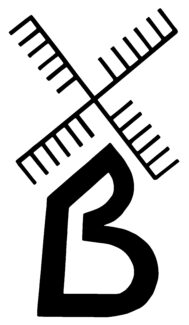An Interview with Douglas Glover, author of THE EROTICS OF RESTRAINT
Douglas Glover’s smart, heartfelt writing manual The Erotics of Restraint—his follow-up to Attack of the Copula Spiders—is coming August 13!
But if you’re like us, that’s a long time to wait for Glover. So to tide you over, he’s answered some of our questions here.

A Biblioasis Interview with Douglas Glover, author of The Erotics of Restraint
For those who are coming to your work for the first time, can you tell us a little about yourself and your writing?
I grew up on a tobacco farm in southern Ontario. Loyalist ancestors. My great-grandfather tried to be a poet and committed suicide—I blame the Loyalists. Studied philosophy at York University and the University of Edinburgh. Taught philosophy briefly, then worked in newspapers across the country for a few years. Ended up in the U.S. for the usual catastrophic domestic reasons, one of those non-decision decisions, but then stayed to bring up my sons, which was a solid good thing.
Early on I was just finding my legs and wrote pretty straightforward novels and sometimes riskier stories. But by the time I wrote The Life and Times of Captain N, I had hit my stride—large themes about the founding of nations and contact with indigenous peoples, intense formal patterning and elaboration, and mixed form. Almost everything I write is comic or at least heavily ironic. In the back of my mind, the ideal of the Menippean satire lurks. Once in my hometown of Waterford, a man I did not know came up to me on the street and said, “You’re the guy who writes those dirty books.”
For those who know you from Attack of the Copula Spiders, can you talk about the relationship between this book and that earlier one?
I’ve written four nonfiction books—Notes Home from a Prodigal Son, The Enamoured Knight, Attack of the Copula Spiders, and now The Erotics of Restraint. They all evolve out of a very early essay “The Novel as a Poem,” which is in Notes Home, where I announced a theoretical approach and a program, which is essentially formalist (or McLuhanite) and what some would call experimental. Form over matter, medium over message in the sense that the way something is written is primary to the meaning it projects. In that essay, I value sign over signified, patterning over verisimilitude (which is really just another pattern), artful elaboration over communication. The program then is to keep reading for form and technique and, of course, writing about it.
Popular literary commentary concentrates on theme and plot, scanting formal considerations. I used to have a radio interview show in Albany in the 90s and every writer I talked to would suddenly come alive when I started asking about structure and devices. “I’ll bet you had fun doing this little thing.” “How did you invent that device and the way it inflects the text?” Writers get bored endlessly explaining their themes, but they love to talk about the joyful inventions of their solitary tussle with language, the things they know how to do intricately and well. Every essay I write is an exploration of and a homage to what writers really do, what they love. I only look at work that I think is formally incandescent. Other than that my taste is eclectic—in this book, from Jane Austen to Witold Gombrowicz.
For many readers, the word “erotics” will be a surprising one to find in the title of a technical book about writing. Can you talk about the various ways you use that term in the book? What’s erotic about syntax and narrative form?
I could write a very long essay about this. It goes to the heart of the matter. First, it’s a direct nod to Attack of the Copula Spiders. Copula and copulate have the same root, from the Latin copulare, to join, link, couple. In grammar the copula is a linking verb, to be for example. So there is a sexual flag in that earlier title, too. Both are ironic references in the sense that irony juxtaposes two meanings simultaneously, in this case the sexual and the literary. The literary meaning of the sexual reference has something to do with the linking aspect of language and with the rhythmic structure of art (sex is rhythmic, right?). Metaphor, for example. I think it was Charles Olson who called the image “a bright, wingèd sexual being.” I am also thinking of Francois Lyotard’s remarkable book Libidinal Economy. Libidinal as in libido, erotic, rhythmic, fleshly.
Second, it’s the title of an essay in the book, an essay on Jane Austen’s novel Mansfield Park, a novel that is about restraint, true morality in conflict with surging hormones and the seedy pragmatism of Regency England. The title of the essay is a joke and a double pun on the words erotic and restraint. Erotics is a substitution for the word aesthetics. A title like “The Aesthetics of Restraint” would have made complete sense for a book and an essay about form. But where would be the fun in that? Also it’s comical the way the heroine’s love interest is finally aroused by her tortured self-restraint, a little Austenian bondage humour. But in literary terms, form is a restraint; and language is constrained by the forms of grammar. So there is always a paradoxical oscillation between erotic rhythms and the pressure of form; the two antithetical vectors are at the heart of art.
You are a writer of fiction and a teacher of creative writing. How does your nonfiction writing practice dovetail with those two other practices?
A good deal of my time is spent reading and analyzing books in order to teach myself how to do what I do better. If you’re candid about what you learn in order to make yourself a writer and how you learn it, that can make you a good teacher. Some of the essays I have written started as lectures. Even my book on Cervantes, The Enamoured Knight, began as a lecture that got away from me (when I hit the 40-page mark, I realized I was doing something else).
In terms of The Erotics of Restraint, I would draw special attention to the very long essay “Anatomy of the Short Story,” which grew directly out of my teaching. I’ve used the three stories I analyze in that essay over and over with creative writing students to teach them the rudiments. “Anatomy” is a huge expansion of the essay on short story structure in Attack of the Copula Spiders. Also an advance. I’ve invented new terms, memes and homologies, and become much clearer in my own mind on how character thought and thematic passages work in story structure. In this regard, the pressure of trying to make myself a better teacher has made me a better thinker about the nature of literary art. These activities are reciprocally generative.
Also I began life as a philosopher. My first academic job was teaching philosophy. It comes naturally to me to think about language, stories, and art at a meta-level and writing essays about them.
What are you reading right now?
Elfriede Jelinek’s novel Greed and Annie Ernaux’s memoir A Man’s Place. Lately, I gravitate toward Austrian writers—Peter Handke, Thomas Bernhard, and now Jelinek—because like me they are so uncomfortable in their own skins. This puts pressure on their language, which has delightful effects. Bernhard seemed to hate everyone but was funny about it. Jelinek just drips venom. It’s so refreshing. Ernaux’s memoir about her father is brilliantly terse and elegantly poignant (her internal commentary about the writing is a lesson to us all). I like short books.

